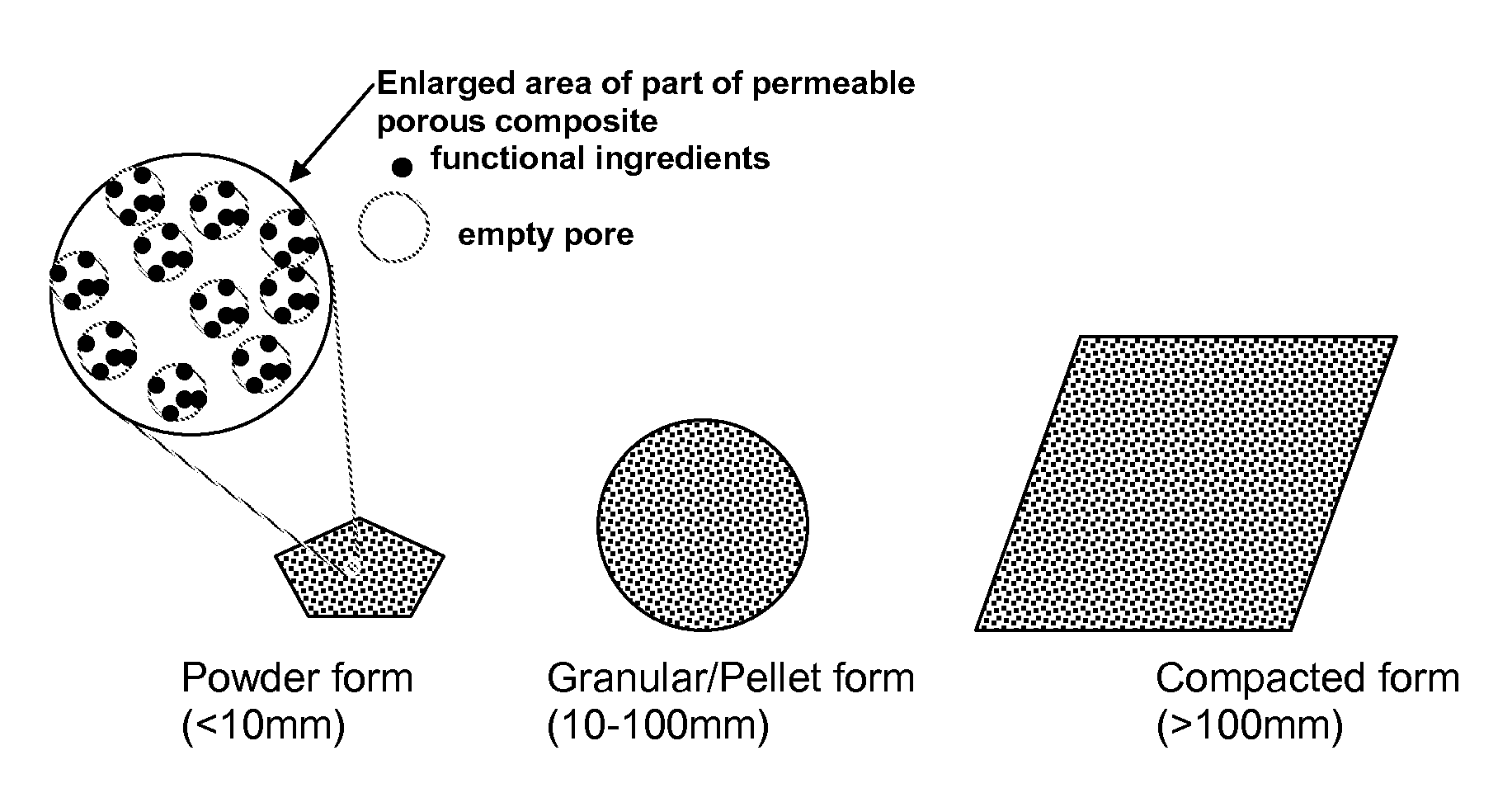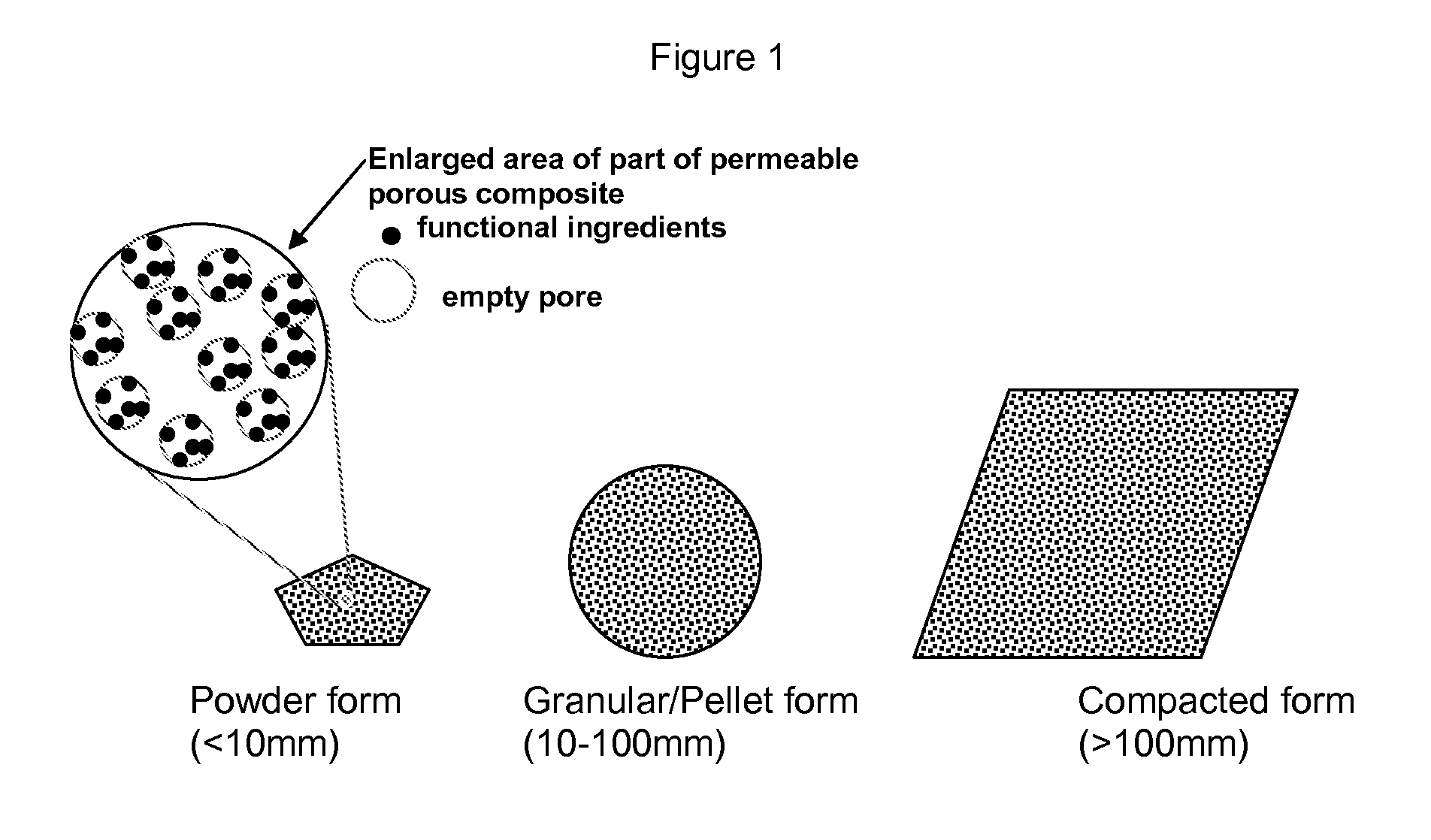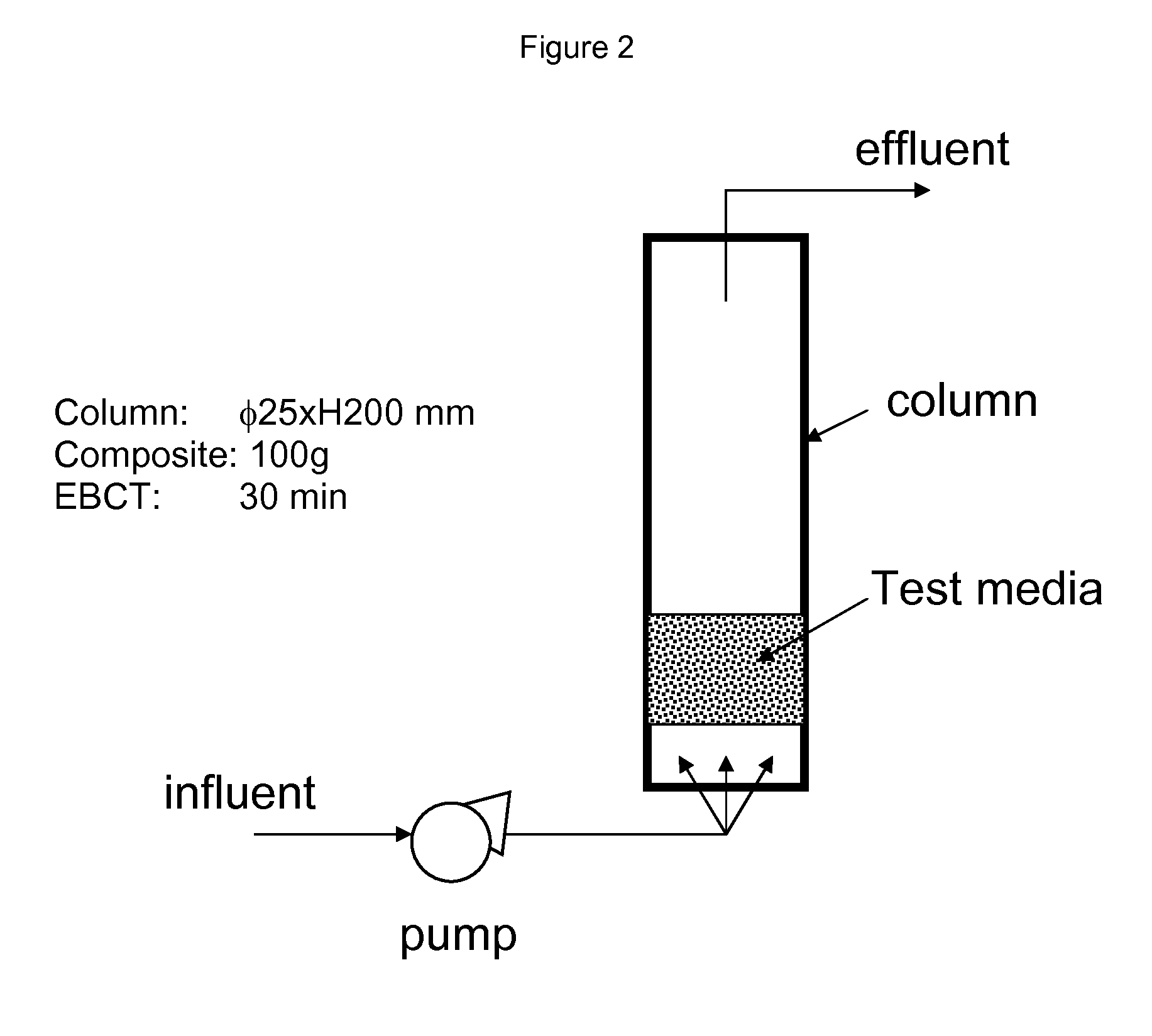Permeable porous composite
a porous composite and permeable technology, applied in the field of composites, can solve the problems of large amount of contaminated wastewater generated, inability to absorb fertilizers, and inability to meet the requirements of the application,
- Summary
- Abstract
- Description
- Claims
- Application Information
AI Technical Summary
Benefits of technology
Problems solved by technology
Method used
Image
Examples
example 1
[0059]A sample of natural occurring water, ground water from Martinsberg, Pa., USA, was used. Chemical analysis is shown in table 2. The test was performed by pumping the water into a column having a test material, as shown in FIG. 3. The empty bed contact time, EBCT, was 25 minutes. The effluent water was analyzed with regards to contaminants after certain time intervals. The content of contaminants at 0 hours is equal to the content in the non treated water (influent).
[0060]
TABLE 2Nitrate (as N) [mg / l]22.7pH7.33Alkalinity [mg / l]220Acidity [mg / l]Total hardness [mg / l]531Conductivity [mS / cm]2680
[0061]Different materials were tested as permeable materials referring to their ability to reduce nitrate concentration in the solution. The following materials were tested;
[0062]Material 1; A commercial available activated carbon granular, AC, 0.6×2.4 mm size having a specific surface area of 600 m2 / g as measured by BET method.
[0063]Material 2; A commercial available solid non porous atomized...
example 2
[0071]Various permeable porous composites according to the invention, were tested according to the method described in example 1, with regards to there nitrate reducing ability. The water to be used was taken from the same source. The permeable porous composites were prepared by mixing different functional ingredients with a porous iron powder obtained by hydrogen reduction of iron oxides and having a particle size between 10-850 μm, mean particle size of about 250 μm for a period of 30 minutes until the functional ingredient was well distributed and locked into the pores of the permeable porous iron.
[0072]In composite 1 1% by weight of AC was used as functional ingredient. The specific surface area of composite 1 was 5.7 m2 / g as measured by BET.
[0073]In composite 2 2% by weight of AC was used as functional ingredient. The specific surface area of composite 2 was 12.8 m2 / g as measured by BET.
[0074]In composite 3 1% by weight of graphite A was used as functional ingredient. The speci...
example 3
[0079]This example shows the ability for a permeable porous composite according to the invention to reduce multiple contaminants in ground water. The test was performed according to example 1 with the exception that Arsenic, As, phosphate, PO43−, and hexavalant chromium, CrVI, was added, spiked, to the water prior to testing.
[0080]The permeable material was the permeable porous composite no 2 used in example 2.
[0081]The concentration of nitrate was measured by an ion selective electrode and expressed as nitrogen content in mg / l. The concentration of phosphate and hexavalent Cr was measured by a colometric method and the concentration of arsenic by atomic absorption analyzer, AAS. The concentration of phosphate was expressed as P mg / l. Also concentrations of As and Cr is expressed in mg / l.
[0082]
TABLE 5NitrateAs mg / lPO43-CrVI(N)%%(P)%%Hoursmg / lreductionmg / lreductionmg / lreductionmg / lreduction023.101.26000.28500.273035.0178.30.00799.40.06477.50.03188.662.3090.00.00799.40.05381.40.02192....
PUM
| Property | Measurement | Unit |
|---|---|---|
| size | aaaaa | aaaaa |
| particle size | aaaaa | aaaaa |
| particle size | aaaaa | aaaaa |
Abstract
Description
Claims
Application Information
 Login to View More
Login to View More - R&D
- Intellectual Property
- Life Sciences
- Materials
- Tech Scout
- Unparalleled Data Quality
- Higher Quality Content
- 60% Fewer Hallucinations
Browse by: Latest US Patents, China's latest patents, Technical Efficacy Thesaurus, Application Domain, Technology Topic, Popular Technical Reports.
© 2025 PatSnap. All rights reserved.Legal|Privacy policy|Modern Slavery Act Transparency Statement|Sitemap|About US| Contact US: help@patsnap.com



